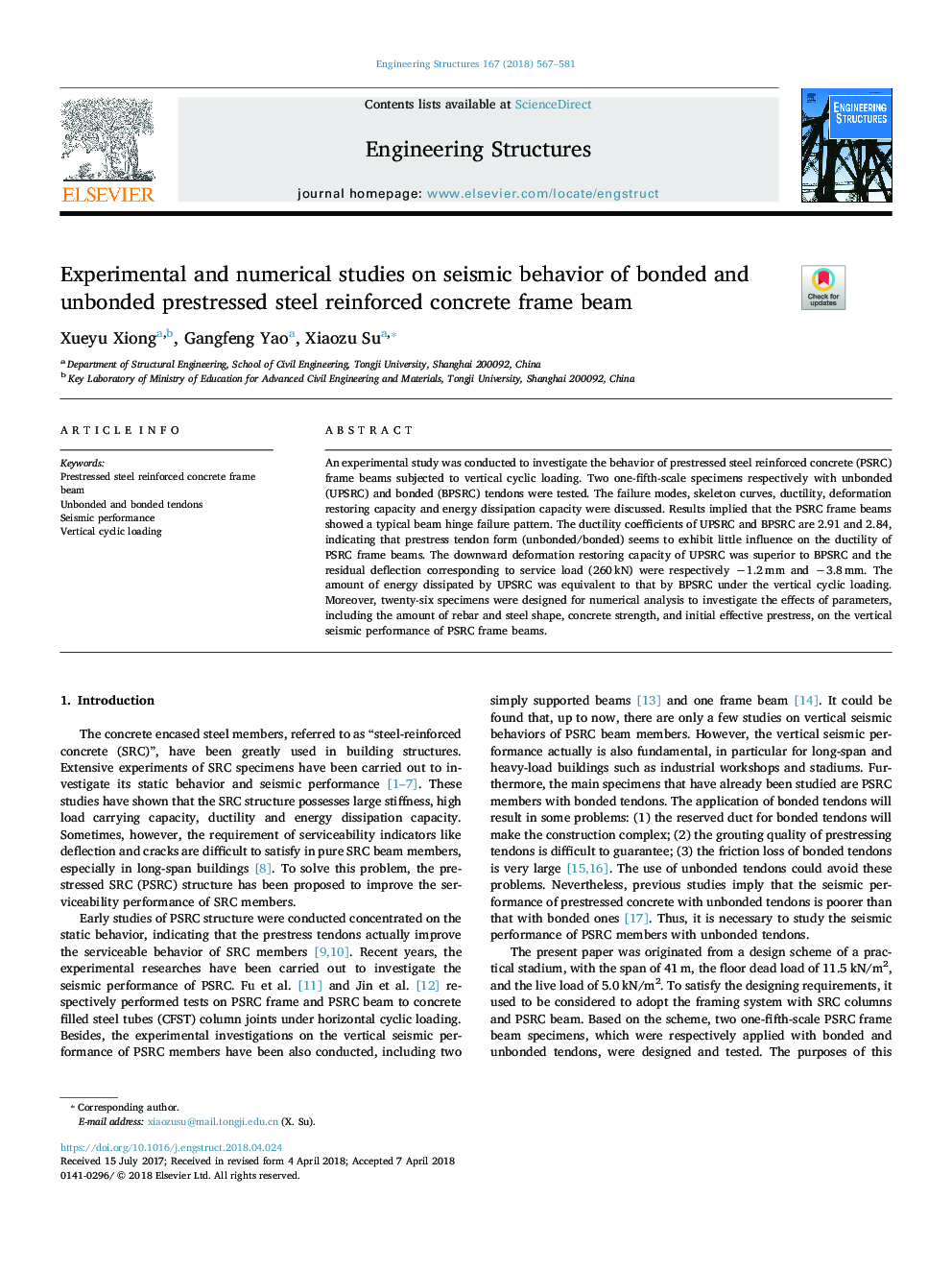| Article ID | Journal | Published Year | Pages | File Type |
|---|---|---|---|---|
| 6737242 | Engineering Structures | 2018 | 15 Pages |
Abstract
An experimental study was conducted to investigate the behavior of prestressed steel reinforced concrete (PSRC) frame beams subjected to vertical cyclic loading. Two one-fifth-scale specimens respectively with unbonded (UPSRC) and bonded (BPSRC) tendons were tested. The failure modes, skeleton curves, ductility, deformation restoring capacity and energy dissipation capacity were discussed. Results implied that the PSRC frame beams showed a typical beam hinge failure pattern. The ductility coefficients of UPSRC and BPSRC are 2.91 and 2.84, indicating that prestress tendon form (unbonded/bonded) seems to exhibit little influence on the ductility of PSRC frame beams. The downward deformation restoring capacity of UPSRC was superior to BPSRC and the residual deflection corresponding to service load (260â¯kN) were respectively â1.2â¯mm and â3.8â¯mm. The amount of energy dissipated by UPSRC was equivalent to that by BPSRC under the vertical cyclic loading. Moreover, twenty-six specimens were designed for numerical analysis to investigate the effects of parameters, including the amount of rebar and steel shape, concrete strength, and initial effective prestress, on the vertical seismic performance of PSRC frame beams.
Keywords
Related Topics
Physical Sciences and Engineering
Earth and Planetary Sciences
Geotechnical Engineering and Engineering Geology
Authors
Xueyu Xiong, Gangfeng Yao, Xiaozu Su,
